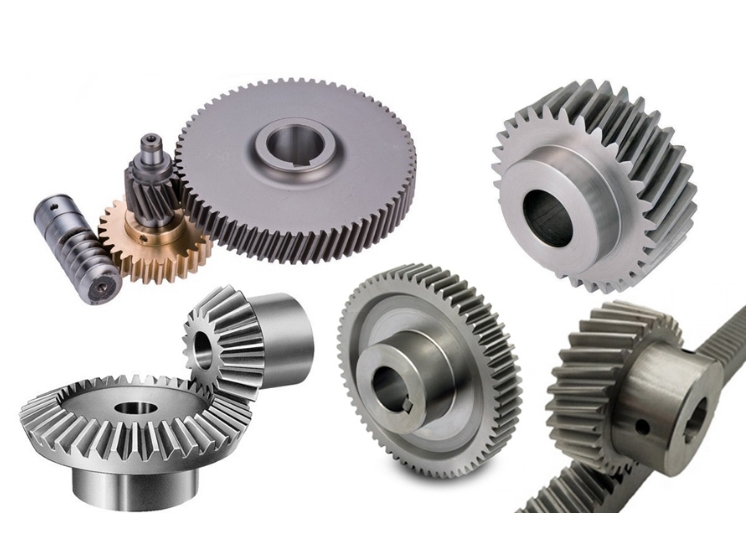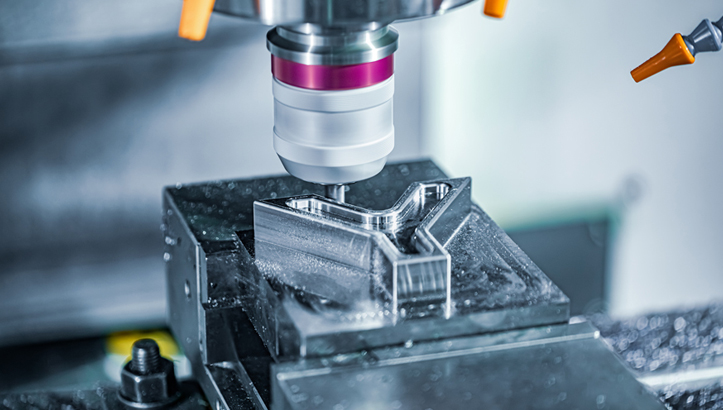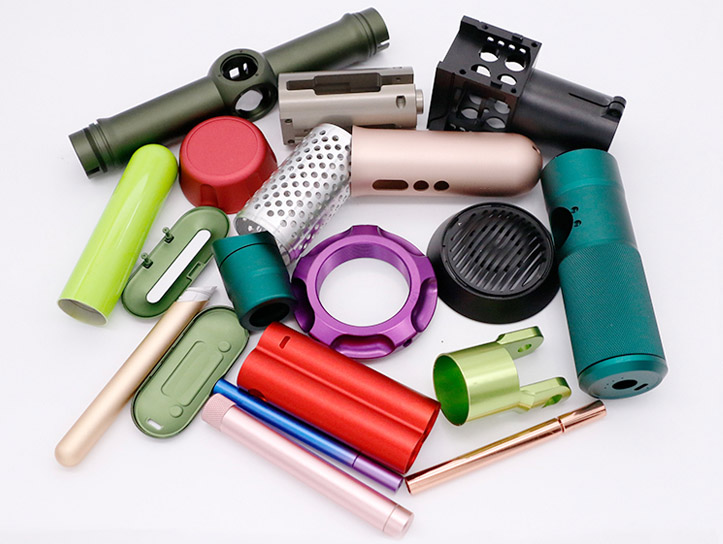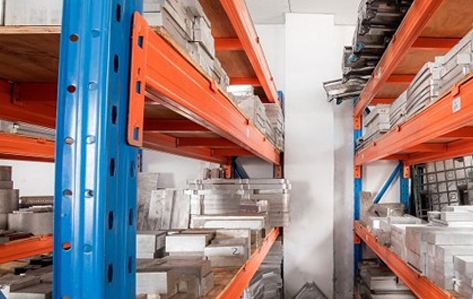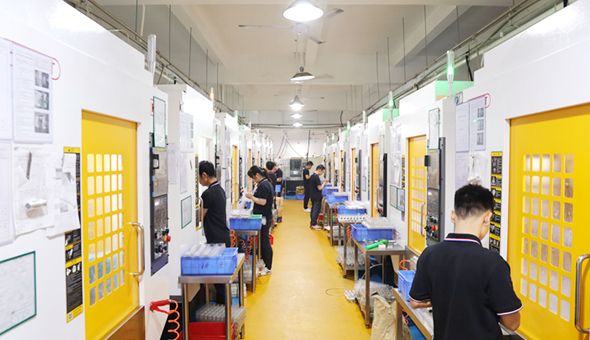CNC Machining Gear: Processes, Type, and Application
The precision and quality of gears are critical in industries ranging from automotive to aerospace. Any flaw in gear manufacturing can lead to significant operational failures, costly repairs, and safety concerns. CNC machining, with its unparalleled precision and repeatability, provides an efficient solution for producing high-quality gears. It ensures that each gear meets the stringent tolerances and performance standards required by modern industries.
CNC machining is a highly efficient process that allows for the production of gears with exceptional accuracy. It is capable of creating a variety of gears, including spur, helical, bevel, and worm gears, all of which are crucial in different applications. Industries such as automotive, aerospace, robotics, and industrial machinery rely on CNC machining to produce gears that operate smoothly, last longer, and function with minimal wear.
Let’s explore the CNC machining process, types of gears, and their applications to understand why it’s the preferred method for gear manufacturing.
What is CNC Machining Gear?
CNC machining gear refers to the process of using Computer Numerical Control technology to manufacture gears with high precision and uniformity. CNC machines are controlled by computer programs that ensure each gear is produced with exact specifications, allowing for the creation of complex geometries and tight tolerances. This method is especially valuable in industries where performance and reliability are critical, such as automotive, aerospace, industrial machinery, and robotics.
CNC machining enables the production of various types of gears—including spur, helical, bevel, and worm gears—using a variety of materials such as steel, aluminum, and plastics. The high level of precision achievable with CNC machining ensures that the gears fit seamlessly into mechanical systems, function efficiently, and endure high levels of stress and wear. This makes CNC machining an ideal choice for producing gears that must meet stringent performance requirements and endure harsh operational conditions.
How Does CNC Gear Machining Work?
In CNC gear machining, the process begins with creating a detailed digital design of the gear, often in a CAD file. This design is then converted into a CNC program, typically using a CAM system, which generates the necessary instructions for the machine. The CNC machine, which can be equipped with various tools such as mills, lathes, and grinders, reads the digital file and automatically performs a series of operations to shape the gear.
Common operations in CNC gear machining include:
1. CNC Turning
Turning is a primary operation where the workpiece is rotated on a lathe, and a cutting tool is fed along the surface to remove material. For gear machining, turning is typically used to shape the outer diameter and face of the gear. In the case of internal gears, the turning process can also be used to form the inner bore or hole. This operation helps achieve precise geometries and smooth finishes.
2. CNC Milling
Milling involves a rotating cutting tool that moves along multiple axes to remove material from the workpiece. In CNC gear machining, milling is often used to create the teeth of the gear. The cutter follows a specific path to form the gear’s tooth profile, such as spur, helical, or bevel teeth. Milling is also useful for shaping complex features such as keyways or splines. For gears with helical or complex angles, CNC machines can adjust the cutter’s angle to produce precise tooth geometry. Milling provides high accuracy, which is essential for maintaining the functional integrity of the gear.
3. CNC Drilling
Drilling is used to create holes in the gear, typically for mounting purposes or to accommodate shafts, pins, or fasteners. This operation ensures that the bore diameter is consistent and precise, allowing the gear to fit securely within a mechanical assembly. In CNC gear machining, drilling is often combined with other operations to ensure the gear is produced with exact dimensional tolerances.
More Resources: Study Guide: CNC Milling vs CNC Drilling
CNC Drilling Technology and Its Application
4. Grinding
Grinding is typically used in the final stages of CNC gear machining, especially for gears that require fine surface finishes or extremely high precision. A grinding wheel or abrasive tool is used to remove small amounts of material from the gear’s teeth or surfaces. This process can refine the tooth profile, remove any burrs, and improve the gear’s overall surface integrity. Gear grinding is especially important for gears that must operate under high loads or in precision-driven applications, such as in aerospace or high-speed machinery, where even the slightest imperfection could affect performance.
5. EDM (Electrical Discharge Machining)
Although not as commonly used for standard gear types, EDM can be used for more specialized applications where extremely hard materials are involved, or when the gear geometry is highly intricate. In this process, electrical discharges erode material from the workpiece to achieve precise shapes. It’s often used for creating gear profiles that cannot be easily achieved through traditional cutting or milling.
One of the key advantages of CNC gear machining is its high repeatability—the ability to produce identical gears in large quantities with minimal deviation from the original design. This reduces the risk of human error, which is common in manual machining, and ensures the production of highly accurate and uniform gears. Additionally, CNC machining allows for faster production speeds and greater flexibility in design, making it an ideal method for producing high-quality gears for industries that demand both precision and efficiency.
What Are the Main Process of Gear Machining?
The process of gear machining involves several key stages, each essential to achieving the desired performance, precision, and durability of the final gear. Here’s the stages of gear machining:
1. Design Creation
The gear machining process begins with the creation of a detailed design using Computer-Aided Design (CAD) software. Engineers use CAD tools to define every aspect of the gear, including the number of teeth, tooth profile, pressure angle, pitch diameter, and other critical features. This step also involves specifying the gear material and performance requirements, which can influence the design. The CAD model helps simulate the gear’s function in its intended environment, allowing for optimization before production begins. Advanced simulations using finite element analysis (FEA) or computer-aided engineering (CAE) can assess how the gear will perform under various stress and load conditions, enabling adjustments to ensure durability and efficiency.
2. Material Selection
Selecting the right material is crucial for ensuring the gear can withstand the specific demands of its application. Common materials include high-carbon steels, alloy steels, stainless steels, and even cast iron or brass, depending on the operational requirements. Factors like load, temperature, corrosion resistance, and environmental conditions will guide the choice of material. For gears that will be subjected to heavy stress, hardened steels or alloy materials are often chosen for their high strength and wear resistance. Additionally, some gears are made from non-ferrous metals like aluminum or bronze when weight reduction or corrosion resistance is a priority. Material selection also affects subsequent processes, including heat treatment and machining techniques.
3. Blank Preparation
Once the material is selected, the next step is to prepare the blank, which is the raw starting material for the gear. The blank is typically cut from a larger piece of material, such as bar stock, castings, or forgings, into a roughly shaped piece. This blank is often machined into a cylindrical or disc form, depending on the type of gear being produced. The goal at this stage is to get the blank as close to the final dimensions as possible, minimizing material waste and setting a solid foundation for further operations. Techniques such as turning or casting are often used to shape the blank before the more precise cutting operations begin.
4. Cutting and Shaping
In the cutting and shaping stage, the actual gear teeth are formed using specialized techniques like gear hobbing, gear broaching, or milling. Gear hobbing is one of the most common methods, where a rotating tool called a hob cuts the teeth into the blank. The blank rotates in sync with the hob, allowing for precise teeth formation. For internal gears or gears with complex profiles, gear broaching may be used, which involves a toothed cutting tool (the broach) being pulled through the blank to form the teeth. For more intricate tooth designs, gear milling or shaping may be employed, allowing multi-axis movement to create features such as bevel gears or helical gears. These methods ensure that the gear teeth are formed with the correct profile and geometry.
5. Heat Treatment
After the teeth have been cut, the gear undergoes heat treatment to improve its hardness, strength, and overall durability. Common heat treatment processes include carburizing, which adds carbon to the surface of the gear for increased hardness, and induction hardening, which selectively hardens the teeth without affecting the entire gear. Tempering is then applied to reduce brittleness and increase the toughness of the gear. Heat treatment is especially critical for gears that will endure high loads, impact, or friction, as it ensures the gear can maintain its mechanical properties under stress. For certain materials, additional treatments like annealing or normalizing may be performed to relieve internal stresses and refine the material properties.
6. Finishing
Once the gear has been heat-treated, it enters the finishing stage, where precise processes like grinding, lapping, or polishing are used to achieve the desired surface finish and dimensional accuracy. Gear grinding is particularly important for fine-tuning the tooth profiles and achieving tight tolerances. This operation removes any remaining imperfections from the teeth and smooths the surface to ensure that the gears mesh correctly during operation. Lapping or polishing may also be used for gears requiring exceptionally smooth surfaces, reducing friction and enhancing wear resistance. These finishing processes help ensure that the gears meet the stringent quality standards required for high-performance applications.
7. Inspection
The final stage in gear machining is thorough inspection to ensure the gear meets all design and quality specifications. Dimensional checks are performed using precise measurement tools like coordinate measuring machines (CMM) to verify that critical dimensions, such as tooth profiles, pitch, and diameter, are within tolerance. Special tools called gear analyzers are used to evaluate the tooth geometry and contact patterns, ensuring the gear meshes correctly. Non-destructive testing (NDT) techniques, such as ultrasonic testing, magnetic particle inspection, or dye penetrant testing, may be employed to detect any internal or surface defects that could compromise gear performance. This step is crucial for ensuring the gear’s reliability and functionality in its final application, whether it’s in automotive, aerospace, or industrial machinery.
8. Final Assembly and Packaging
After passing inspection, the gear may undergo final assembly if it is part of a larger mechanical system. For example, the gear might be fitted onto a shaft, combined with bearings, or incorporated into a gear train. The finished gears are then carefully packaged and shipped to the customer or used in production, depending on their application.
What is the Importance of CNC Machining for Gear Production?
The importance of CNC machining for gear production cannot be overstated. CNC machines offer unmatched precision and repeatability, which are critical for producing high-quality gears that meet stringent standards. In industries such as automotive, aerospace, and industrial machinery, even the smallest deviation in gear dimensions can lead to operational inefficiencies, increased wear, and even catastrophic failure. CNC machining ensures that gears are manufactured with exceptional accuracy, allowing them to perform optimally under various conditions.
Precision is particularly important when it comes to the meshing of gears. Gears must mesh seamlessly with one another to transfer motion and torque efficiently. Any misalignment in the teeth can result in increased friction, wear, and heat generation, all of which can reduce the lifespan of the gear and the machinery in which it operates. CNC machining ensures that gear teeth are cut with perfect profiles and dimensions, facilitating smooth engagement and minimizing energy loss. This is especially critical in high-performance applications like gearboxes and automotive transmissions, where precise gear interaction directly impacts the overall efficiency, fuel economy, and performance of the system.
What Materials Are Best for CNC Machining Gear?
The choice of material for CNC machining gears is vital because it directly affects the gear’s performance, durability, strength, and cost-effectiveness. The material selected must meet the specific requirements of the application, such as the gear’s load capacity, operating environment, and the type of mechanical stresses it will encounter. Below are the most common materials used for CNC machining gears, along with their characteristics and ideal applications:
1. Steel (Carbon and Alloy Steels)
Steel is the most commonly used material for CNC machining gears, particularly carbon steels and alloy steels, due to their excellent combination of strength, hardness, and wear resistance. Carbon steels, such as 1045 or 1060, are favored for their affordability and decent tensile strength, making them suitable for medium-duty gears. For applications that demand higher strength, alloy steels like 4140 or 4340 are used.
These steels contain added elements like chromium, molybdenum, or nickel, which improve their hardenability, toughness, and corrosion resistance. Alloy steels are often subjected to heat treatments like carburizing or induction hardening to further enhance their performance. Steel gears are typically used in demanding, high-performance applications, such as automotive transmissions, gearboxes, and industrial machinery, where durability and high load-bearing capacity are essential.
2. Aluminum
Aluminum is a lightweight, corrosion-resistant material that is commonly used for CNC-machined gears in applications where reducing weight is crucial. Materials like 6061-T6 and 7075-T6 aluminum alloys offer a balance of strength and machinability, making them suitable for gears in aerospace and electric vehicle applications. Aluminum gears are typically used in low-to-moderate load applications, where the strength-to-weight ratio is more important than extreme hardness.
Aluminum’s corrosion resistance ensures it can perform well in moist or chemically aggressive environments, making it ideal for parts exposed to harsh conditions. Additionally, aluminum gears are particularly valuable in applications where lightweight performance and energy efficiency are a priority, such as drones, robotics, or electric motors.
3. Brass
Brass is a non-ferrous metal alloy made primarily of copper and zinc, known for its low friction, excellent machinability, and corrosion resistance. Brass gears are commonly used in applications where smooth operation and low friction are key, such as in precision mechanisms. C36000 brass is often used for high-performance applications because of its free-cutting properties, which make it easy to machine into complex shapes. Brass gears are quieter in operation than steel gears, making them suitable for environments where noise reduction is necessary. These gears are frequently found in clocks, electronic devices, and marine equipment, where the ability to withstand corrosive environments, combined with quiet operation, is critical.
4. Plastics (Acetal, Nylon, and PEEK)
Plastics such as Acetal (Delrin), Nylon, and PEEK are becoming increasingly popular in CNC-machined gears, particularly for light-duty, low-speed applications. Acetal (Delrin) is known for its high stiffness, low friction, and excellent dimensional stability, which makes it ideal for gears in precision equipment or small motors. Nylon is a popular choice for self-lubricating gears, which can help reduce friction and wear without needing additional lubrication, making it perfect for quiet, low-load applications. PEEK, though more expensive, offers outstanding chemical resistance, high strength, and thermal stability, which makes it suitable for high-performance applications in extreme environments. Plastic gears are often used in home appliances, small motors, robotics, and automated machinery where noise reduction, weight savings, and reduced maintenance are important.
5. Cast Iron
Cast iron is a strong, durable material commonly used in gears that need to absorb shock and resist vibration. Cast iron gears are typically used for low-to-medium load applications and are particularly beneficial in heavy-duty machinery like pumps, large gearboxes, and industrial equipment. The primary advantage of cast iron is its ability to absorb shock and dampen vibrations, making it useful in noisy environments.
Gray cast iron and ductile cast iron (nodular cast iron) are commonly used for gears, with ductile iron offering improved strength and toughness compared to gray cast iron. Cast iron is often chosen for large, low-speed gears because of its cost-effectiveness and the ability to produce large, intricate shapes. However, it is generally not used for high-precision applications due to its lower tensile strength compared to steel.
6. Stainless Steel
Stainless steel is a corrosion-resistant, high-strength material used in CNC-machined gears for applications that require both strength and resilience against corrosive environments. Gears made from stainless steel, such as those made from AISI 304 or AISI 316, are often used in industries where gears are exposed to moisture, chemicals, or extreme temperatures, such as food processing, marine environments, or medical devices.
Stainless steel is not as easy to machine as carbon steels, and it typically requires higher machining costs. However, its ability to withstand corrosive conditions without degrading over time makes it ideal for long-term durability in harsh environments. These gears are often used in high-stress applications where corrosion resistance is more important than cost, such as in medical equipment, marine gear systems, or high-end industrial machinery.
What Types of Gears Can Be Produced Through CNC Machining?
CNC machining can produce a variety of gear types to suit different applications:
| Gear Type | Description | Applications |
|---|---|---|
| Spur Gears | Straight teeth parallel to the axis of rotation; highly efficient for motion and torque transmission. | Gearboxes, pumps, automotive transmissions, industrial machinery. |
| Helical Gears | Teeth cut at an angle for smoother operation, higher load capacity, and reduced noise. | Automotive drivetrains, elevators, conveyor systems. |
| Bevel Gears | Conical gears for transmitting power between non-parallel shafts, often at 90 degrees. | Differentials, machine tools, right-angle drives. |
| Worm Gears | Compact design with a worm and worm wheel for high torque transmission and self-locking capabilities. | Mechanical drives, elevators, winches. |
| Internal Gears | Teeth on the inside of the gear ring; essential for planetary gear systems. | Automatic transmissions, gear reducers, differential mechanisms. |
| Rack and Pinion | Converts rotational motion into linear motion using a straight gear (rack) and circular gear (pinion). | Steering systems, elevators, machine tool drives. |
| Hypoid Gears | Similar to bevel gears but with offset axes, providing higher torque capacity and compact design. | Automotive differentials, heavy machinery. |
| Crown Gears | Bevel gears with curved teeth for compact right-angle drives. | Automotive systems, machinery. |
| Spiral Bevel Gears | Curved teeth for smoother, quieter operation and high load capacity. | Automotive axles, industrial machinery, gearboxes. |
How Much Does CNC Machining Gear?
The cost of CNC machining gears depends on factors such as design complexity, material, and required precision. Complex gears such as bevel or spiral types cost more due to additional machining time, while simpler gears like spur gears are more affordable. Material choice also impacts price. Common options like steel or aluminum are cheaper, whereas harder or specialized materials like titanium increase costs.
What Are the Applications of CNC Machining Gear?
CNC machined gears are used in a wide range of applications across multiple industries:
| Industry | Applications | Key Benefits |
|---|---|---|
| Automotive | Transmissions, steering mechanisms, powertrains, differentials, braking systems, and electric vehicles. | Smooth power transfer, high durability, and quiet operation. |
| Aerospace | Aircraft engines, turbines, compressors, landing gear systems, control mechanisms, and actuators. | High precision, reliability under extreme conditions, and strict adherence to safety standards. |
| Industrial Machinery | Conveyor systems, robotic arms, industrial pumps, mixers, compressors, and elevators. | Efficient power transmission, heavy-duty performance, and precision in demanding environments. |
| Robotics | Gearboxes, actuators, motion control systems, and robotic arms in industrial and medical applications. | Accurate movement, customized designs, and minimal maintenance requirements. |
| Energy Generation | Wind turbines, hydropower systems, generators, and electric motors. | Efficient power transfer, high torque capacity, and continuous operation reliability. |
| Medical Devices | Surgical instruments, dental equipment, diagnostic machines, and robotic surgery systems. | Controlled, repeatable movement, strict tolerances, and reliability in sensitive operations. |
| Consumer Electronics | Cameras, printers, and power tools. | Quieter operation, improved performance, and increased durability for consumer satisfaction. |
Start Your CNC Machining Gear Project at VMT
At VMT, we specialize in providing high-quality CNC machining gears for various industries. With over 14 years of experience and state-of-the-art equipment, we ensure that your gear production meets the highest standards of accuracy and performance. Contact us today to start your CNC gear project!
Frequently Asked Questions About CNC Machining Gear
What Are Some Design Tips for Gear Machining?
When designing gears, ensure proper tooth profile for smooth engagement. Choose the correct material based on wear resistance and load requirements. Maintain tight tolerances and correct backlash to ensure precise gear meshing. Use computer-aided design (CAD) software to optimize design for manufacturability and minimize stress concentrations.
How Can You Ensure High Precision in Gear Machining?
To ensure high precision, use high-quality cutting tools, maintain optimal machine settings, and check the machine’s calibration. Implement advanced measuring equipment like CMMs (Coordinate Measuring Machines) to verify dimensions. Additionally, maintain a clean machining environment and regularly inspect cutting tools for wear.
What Does a Gear Machinist Do?
A gear machinist is responsible for setting up and operating machines to cut and shape gears according to precise specifications. They monitor machine performance, adjust settings, and perform routine maintenance. They also inspect gear quality to ensure accuracy, smooth operation, and adherence to customer requirements.
What Is Gear Forming?
Gear forming is a machining process that creates gears using a shaped cutting tool or die. The process typically includes methods like gear hobbing, gear shaping, or broaching, where material is progressively removed to form teeth. This technique is often used for creating specific gear profiles with high efficiency.
Machining Gears Cutting Tools
Machining gears cutting tools are specialized tools used in the process of shaping gears. Common types include hobs (for hobbing gears), shaper cutters (for gear shaping), and broaches (for cutting gear teeth profiles). These tools must be made from durable materials like high-speed steel or carbide to withstand the stresses of gear cutting. Proper tool selection, maintenance, and alignment are crucial to achieving precise, high-quality gears with accurate tooth profiles and smooth operation.

